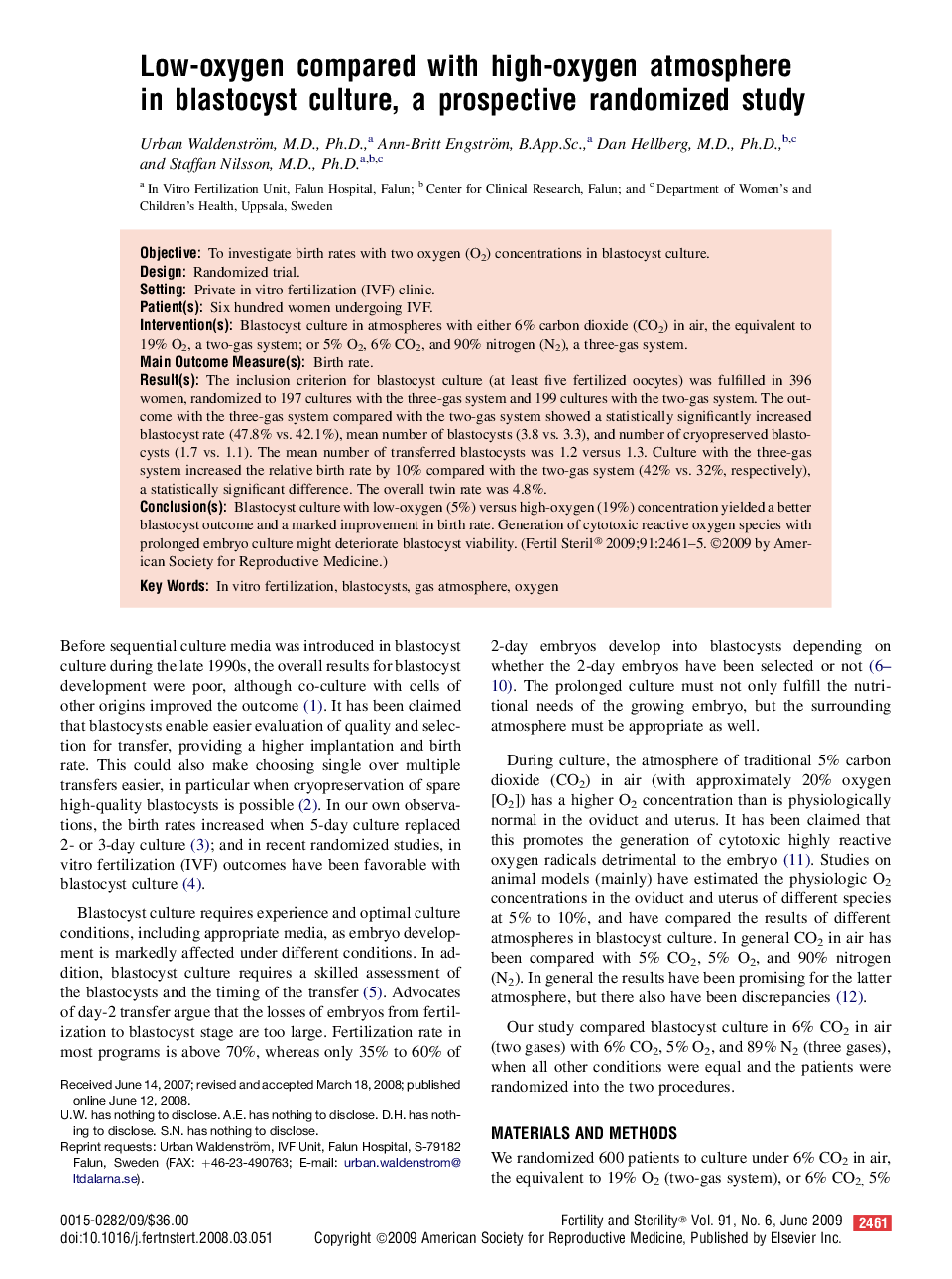| Article ID | Journal | Published Year | Pages | File Type |
|---|---|---|---|---|
| 3934260 | Fertility and Sterility | 2009 | 5 Pages |
ObjectiveTo investigate birth rates with two oxygen (O2) concentrations in blastocyst culture.DesignRandomized trial.SettingPrivate in vitro fertilization (IVF) clinic.Patient(s)Six hundred women undergoing IVF.Intervention(s)Blastocyst culture in atmospheres with either 6% carbon dioxide (CO2) in air, the equivalent to 19% O2, a two-gas system; or 5% O2, 6% CO2, and 90% nitrogen (N2), a three-gas system.Main Outcome Measure(s)Birth rate.Result(s)The inclusion criterion for blastocyst culture (at least five fertilized oocytes) was fulfilled in 396 women, randomized to 197 cultures with the three-gas system and 199 cultures with the two-gas system. The outcome with the three-gas system compared with the two-gas system showed a statistically significantly increased blastocyst rate (47.8% vs. 42.1%), mean number of blastocysts (3.8 vs. 3.3), and number of cryopreserved blastocysts (1.7 vs. 1.1). The mean number of transferred blastocysts was 1.2 versus 1.3. Culture with the three-gas system increased the relative birth rate by 10% compared with the two-gas system (42% vs. 32%, respectively), a statistically significant difference. The overall twin rate was 4.8%.Conclusion(s)Blastocyst culture with low-oxygen (5%) versus high-oxygen (19%) concentration yielded a better blastocyst outcome and a marked improvement in birth rate. Generation of cytotoxic reactive oxygen species with prolonged embryo culture might deteriorate blastocyst viability.
